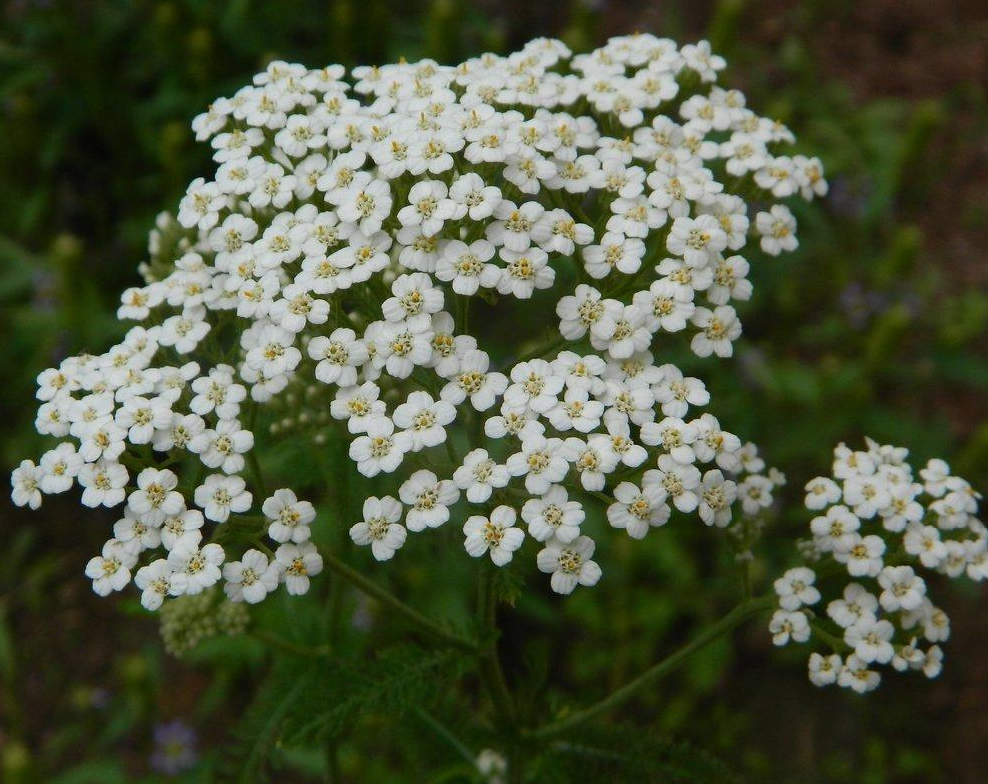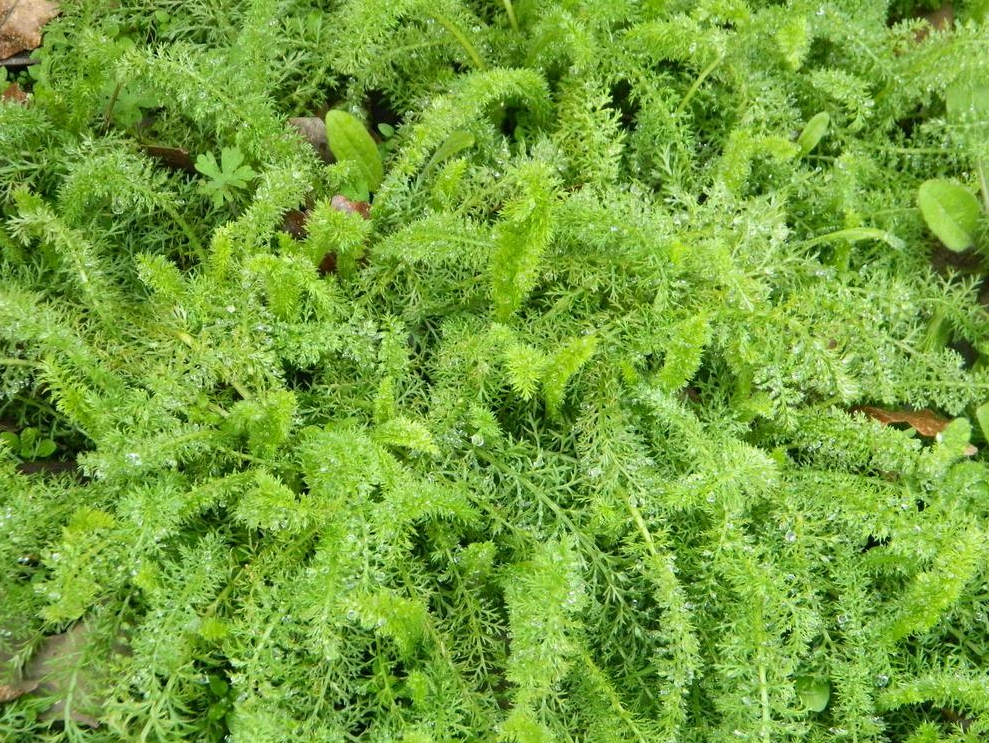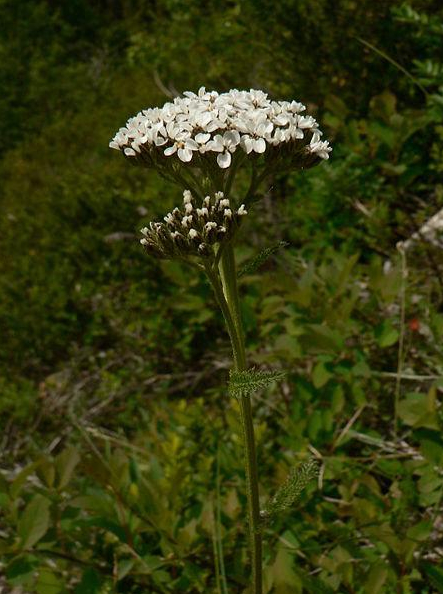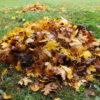Description
Yarrow – White – White Yarrow (A.K.A. Milfoil, Soldier’s Woundwort, Thousand-leaf, Nosebleed Plant, Carpenter’s Weed, Woundwort, Staunchweed, Bloodwort)
300 Seeds per pack
Perennial Herb
Days to Maturity: 120–130 Days
Sun Requirements: Full sun; tolerates partial shade
Botanical Name: (Achillea millefolium)
Named after the Greek hero Achilles—who, according to legend, used it to treat his soldiers’ wounds during the Trojan War around 1200 B.C.—White Yarrow has a long and rich history. Native to the temperate regions of Europe, Asia, and North America, it has also been widely used by Indigenous tribes for ailments ranging from respiratory issues to toothaches.
Plants reach 2–3 feet in height and form dense clumps of finely cut, fern-like green foliage with a pleasant, licorice-like aroma. In summer, each plant sends up sturdy, upright stems topped with large, flat-topped umbels measuring 5 inches across, each packed with 20–25 creamy-white flowers. These blooms are long-lasting and attract pollinators, making it a valuable addition to ornamental herb gardens.
The flavor of yarrow is bitter and aromatic, with a tarragon-like sweetness and peppery undertones. While the upper portions of the plant are edible, the young leaves and flowers are most commonly used. Fresh or dried, it lends its complex flavor to teas, bitters, infused oils and vinegars, compound butters, and herbal salts. A small quantity brightens salads, especially when paired with lemon juice and sugar to soften its bitterness. Leaves and flowers can also be sautéed or added to broths for a unique herbal flavor, but should always be added at the end of cooking to preserve their delicate taste.
Once dried, the plant stores well and retains its potency in both the kitchen and medicine cabinet. Yarrow has long been prized for its healing powers—used historically to stop bleeding, reduce inflammation, and bring down fevers. Yarrow is still valued in herbal practice today to ease colds, hay fever, and digestive ailments like dysentery and diarrhea, as well as to stimulate appetite, regulate menstruation, and encourage sweating. These benefits are typically obtained by preparing the plant as a tea, tincture, poultice, or infused oil.
Packed with vitamins A, C, and K, along with folate, White Yarrow is a healthy addition to any garden.
Disease Resistance: Generally disease resistant.
Medical Disclaimer:
The information provided is for educational purposes only and does not constitute medical advice. Yarrow may interact with certain medications or medical conditions. Always consult a qualified healthcare professional before using yarrow, especially if you are pregnant, breastfeeding, taking medications, or have underlying health concerns. We accept no responsibility for misuse or adverse effects resulting from the use of this plant or the information presented.
Planting Instructions for White Yarrow Seeds
When to Plant:
Start seeds indoors 6–8 weeks before your last expected frost, or direct sow outdoors after all danger of frost has passed. Fall sowing is also possible in mild climates.
Where to Plant:
Choose a location with full sun (at least 6 hours daily). Yarrow tolerates partial shade but may grow leggy with fewer blooms. Select well-drained, dry to sandy soil—rich, moist soils tend to encourage weak, floppy growth. Avoid planting in areas with excessive nutrients or frequent irrigation. Ideal for borders, permanent beds, or wildflower gardens.
How to Plant:
Yarrow seeds require light to germinate. Sow on the soil surface and press gently to ensure good seed-to-soil contact—do not cover with soil. Keep evenly moist until germination (10–14 days at 65–75°F). Indoors: use seed trays or flats filled with a light, well-draining mix. Outdoors: broadcast onto prepared, moist soil and lightly press in. Thin or transplant seedlings to 12–24″ apart once they have 2–3 sets of true leaves.
Growing Notes:
Water sparingly once established—yarrow is drought-tolerant and prefers to dry out between waterings. Overwatering may lead to root rot or mildew. Avoid fertilizing, as nutrient-rich conditions can lead to excessive spread and weaker stems. Plants typically reach 28–30″ in height and may require light support in rich soils or partial shade.
Maintenance:
Deadhead spent flowers regularly to promote continuous blooming. Cut plants back by half after flowering to maintain shape and encourage reblooming. Every 2–3 years, divide mature clumps in early spring or fall to prevent overcrowding and renew vigor.
Harvesting:
Harvest the flower clusters, stems, and young leaves when plants are in full bloom—mid to late summer—for drying or fresh use. For seed saving, allow flower heads to fully dry on the plant before collecting.
Storage:
Harvest when about 80% of the flowers are open for best quality. Shake off any insects, then either hang the plant in small bundles or lay flat in a dark, dry, well-ventilated space. A dehydrator set below 95°F (35°C) may also be used. Once fully dried, separate stems by rubbing the material through a coarse screen if desired. Store dried yarrow in an airtight container kept in a cool, dark place. Properly stored, it retains potency for several months.
Medicinal Use (for Educational Purposes Only):
Yarrow has long been valued for its ability to support wound healing, ease menstrual discomfort, and reduce digestive upset. The dried flowers and leaves are most commonly used in teas, tinctures, balms, and infused oils. To prepare a tea, steep 1–2 teaspoons of dried yarrow in hot water for 10 minutes. This may support fever relief, cramping, or digestive issues. Infused oil or poultices may be applied to minor cuts and scrapes. Use yarrow in moderation and always consult a qualified healthcare provider before internal or topical use. Not recommended for children, pregnant or breastfeeding women, or individuals with allergies to plants in the Asteraceae family.
FAQ:
What is the historical or notable background of White Yarrow?
White Yarrow, botanically known as Achillea millefolium, is named after the Greek hero Achilles, who, according to legend, used it to treat soldiers' wounds during the Trojan War. It has been used in traditional medicine across Europe, Asia, and North America.
How would you describe the flavor of White Yarrow?
White Yarrow has a bitter and aromatic taste, featuring a tarragon-like sweetness with peppery undertones.
What does White Yarrow look like, and what are its growing habits?
White Yarrow grows 2–3 feet tall and features finely cut, fern-like foliage that forms dense, bushy clumps. Upright stems rise above the greenery, each crowned with flat-topped 5" umbels carrying 20–25 creamy-white flowers, creating a striking and aromatic presence in the garden.
How and when do I harvest White Yarrow?
Harvest White Yarrow when about 80% of the flowers are open, typically in mid to late summer. Pick the flower clusters, stems, and young leaves for fresh use or drying. For seed saving, wait until the flower heads have dried on the plant.
When is the best time to plant White Yarrow?
Start seeds indoors 6–8 weeks before the last frost or direct sow after frost danger passes. In mild climates, fall sowing is also effective.
What are the common culinary uses of White Yarrow?
White Yarrow can be used fresh or dried in a variety of preparations, including teas, bitters, infused oils and vinegars, compound butters, and herbal salts. The young leaves lend a distinct flavor to salads and broths, but yarrow's delicate herbal essence tends to diminish with prolonged cooking, so it's best added at the end to preserve its unique flavor.
What’s the best way to store White Yarrow after harvest?
To store, dry the plant thoroughly by hanging in bundles or using a dehydrator below 95°F. Once dry, store in airtight containers in a cool, dark place. It retains its potency for several months when stored properly.
What nutrients does White Yarrow provide?
White Yarrow is rich in vitamins A, C, and K, and also contains folate, making it a nutritious addition to both the kitchen and herbal medicine cabinet.
Does White Yarrow have any notable disease resistance?
Yes, White Yarrow is generally disease resistant, making it a hardy and low-maintenance addition to the garden!



















Patricia Q. (verified owner) –
Awesome seed and seed company
Marsha S. (verified owner) –
All of the herbs I will be planting and growing in the house for the winter with a Spring transplant planned! The 6 varieties of squash seeds received this spring are so big and pretty and production has been wonderful. The squash is delicious!
Connie (verified owner) –
Speedy delivery and just what I wanted. Great variety to chose from. Site easy to maneuver and I give 5 stars to this site.